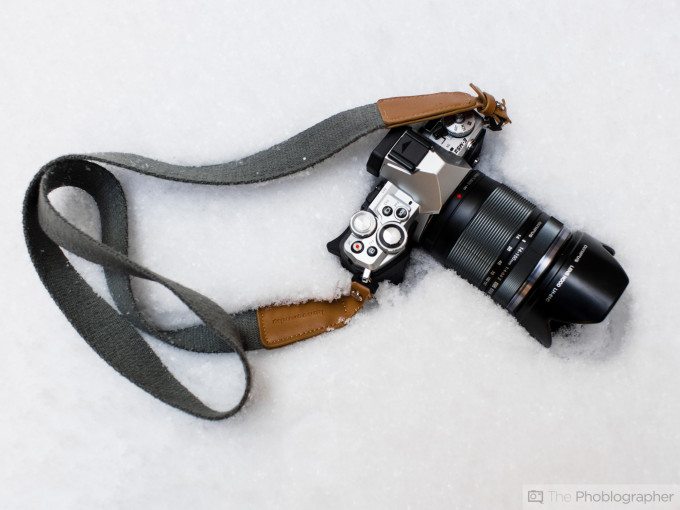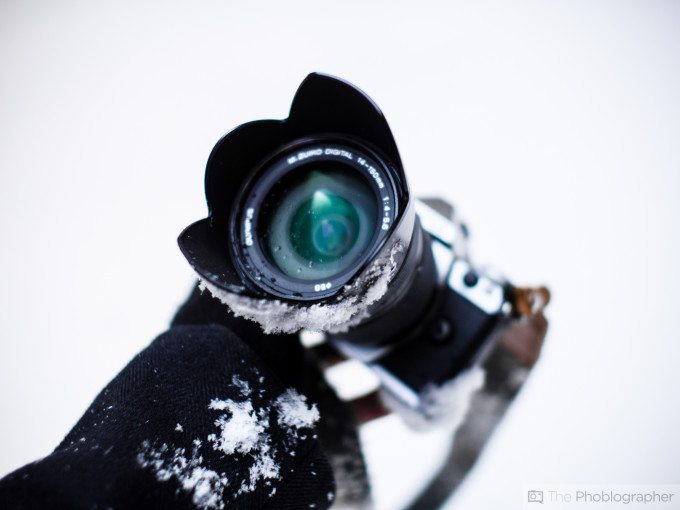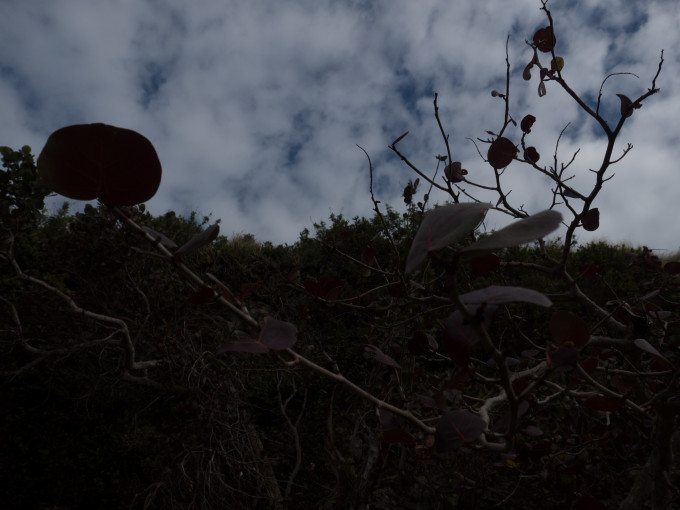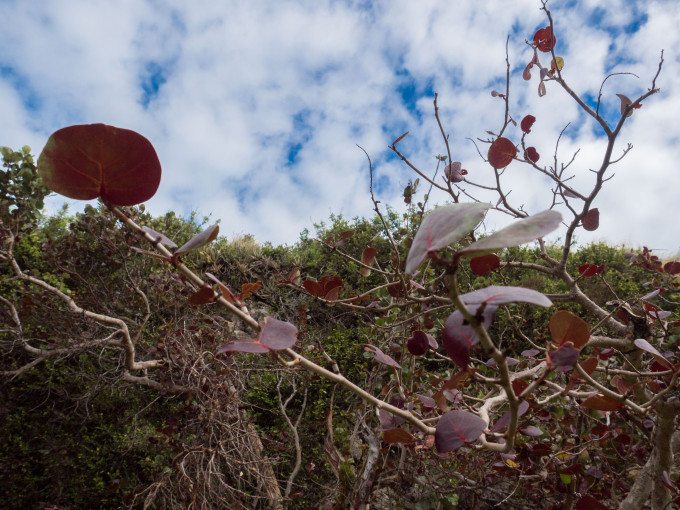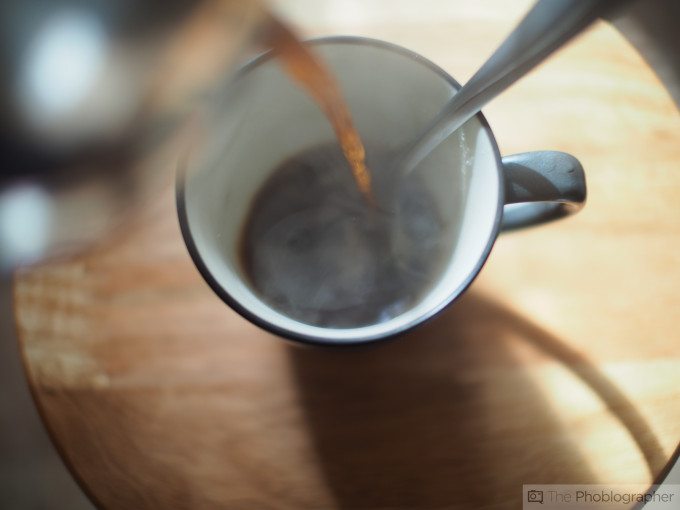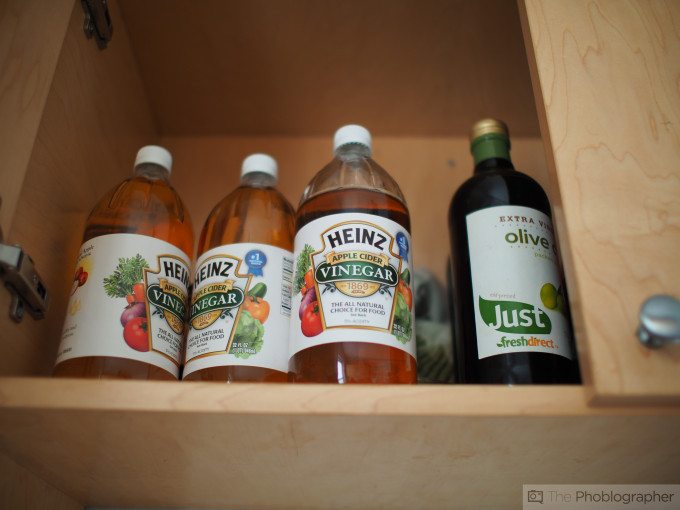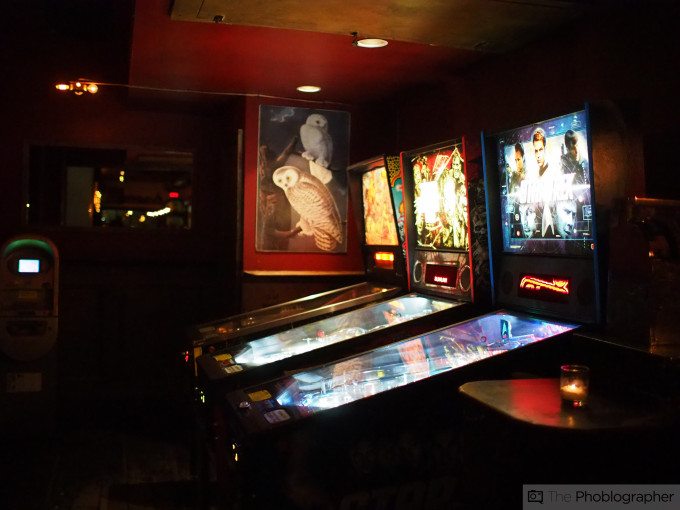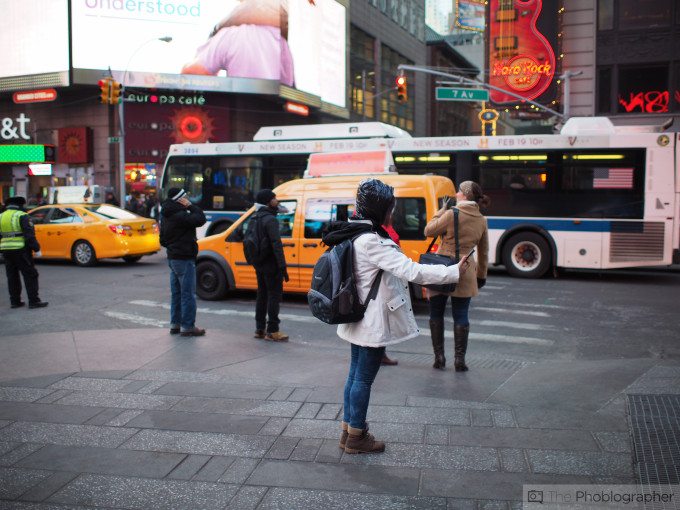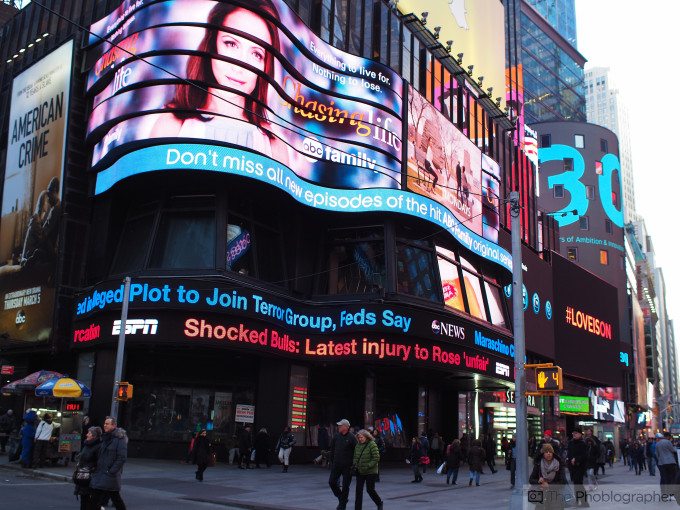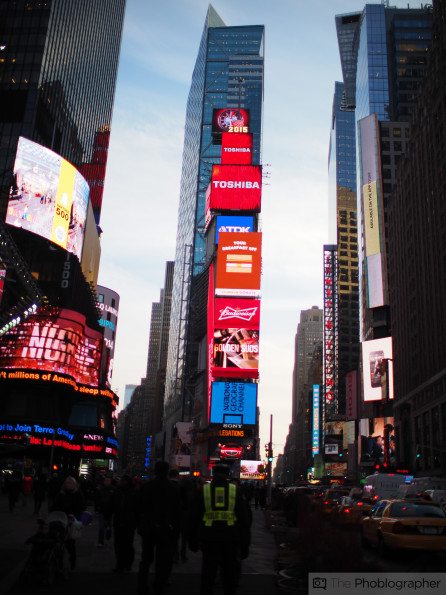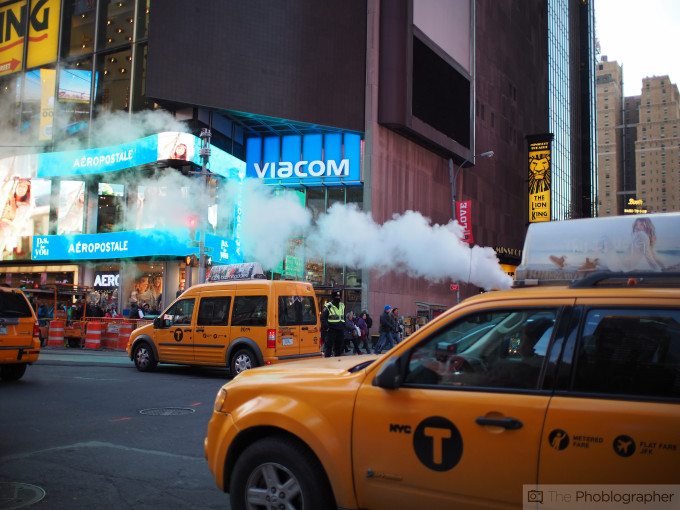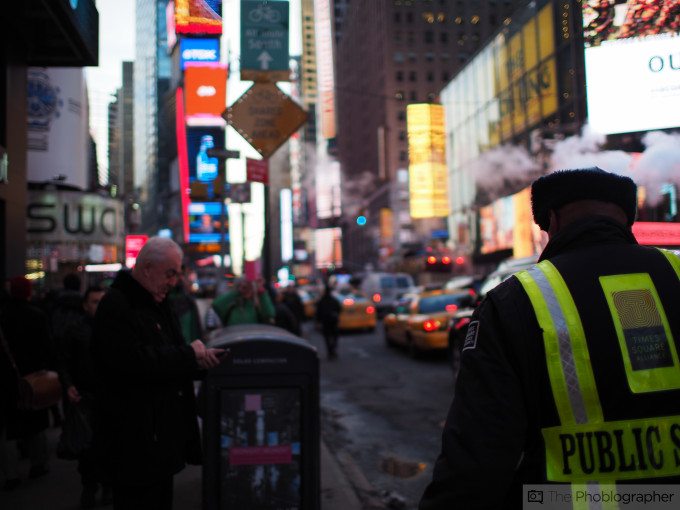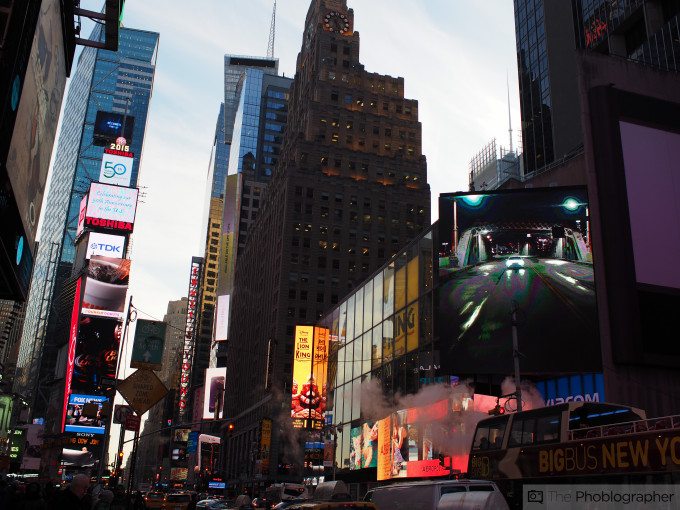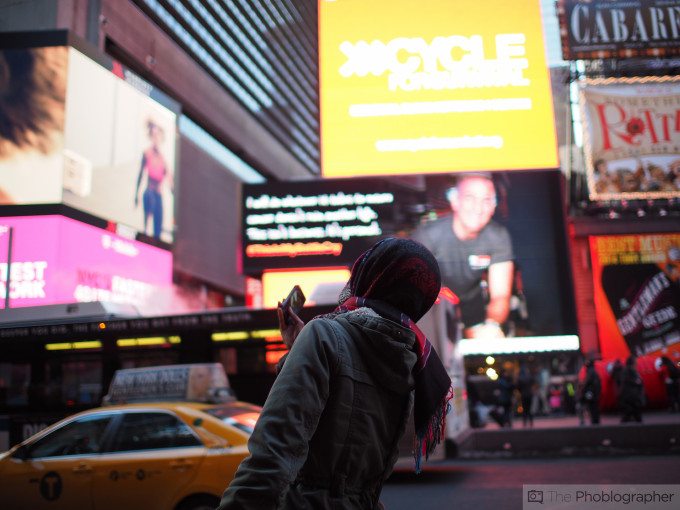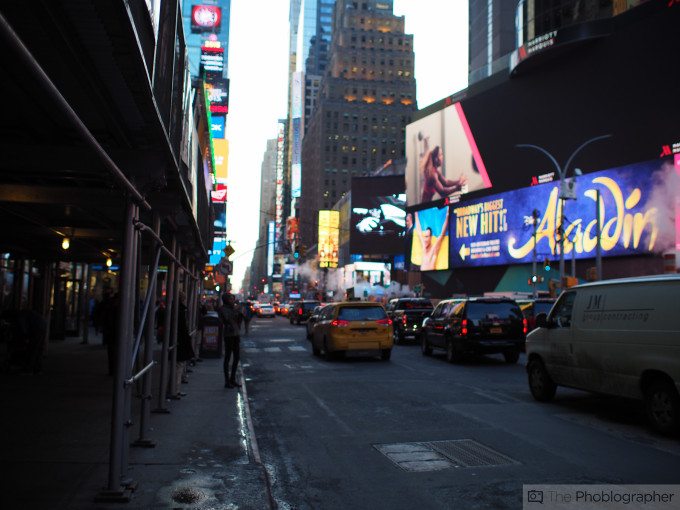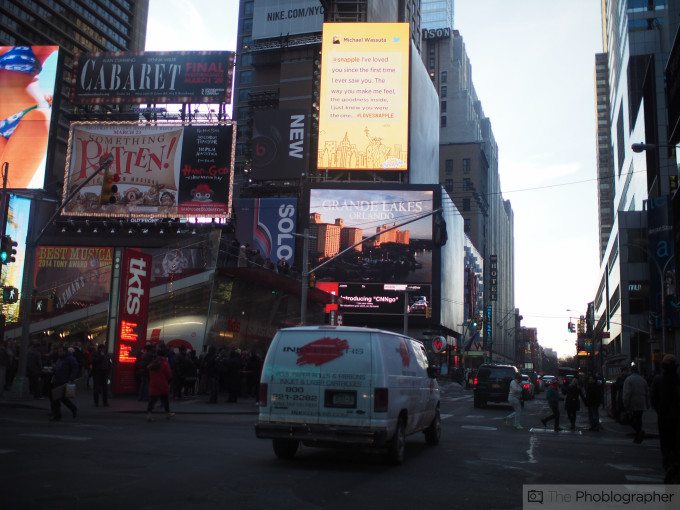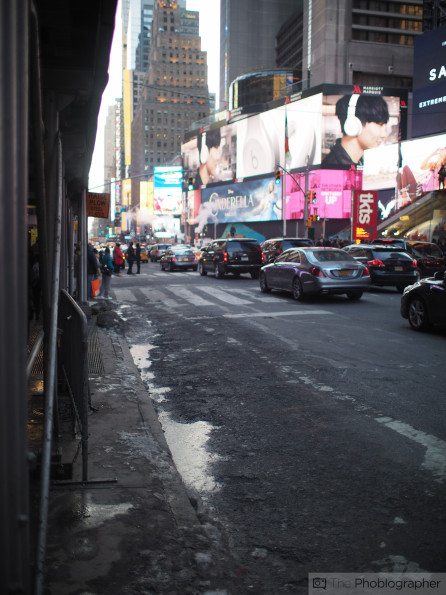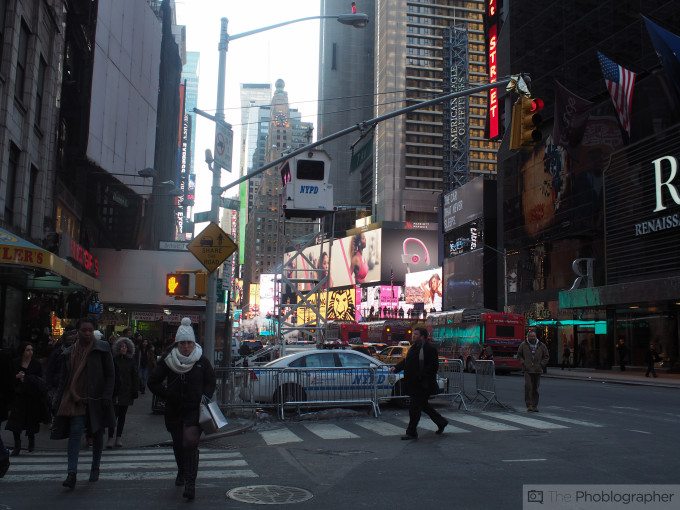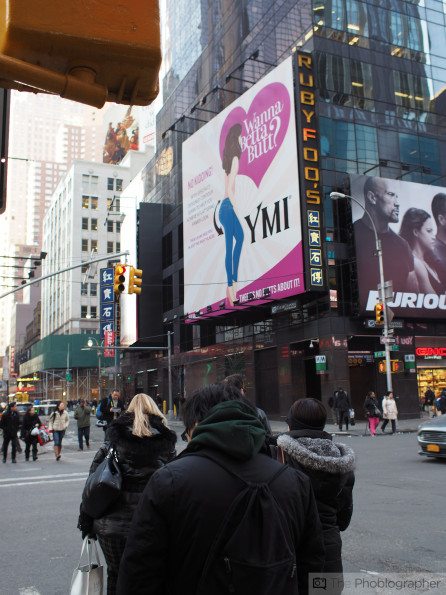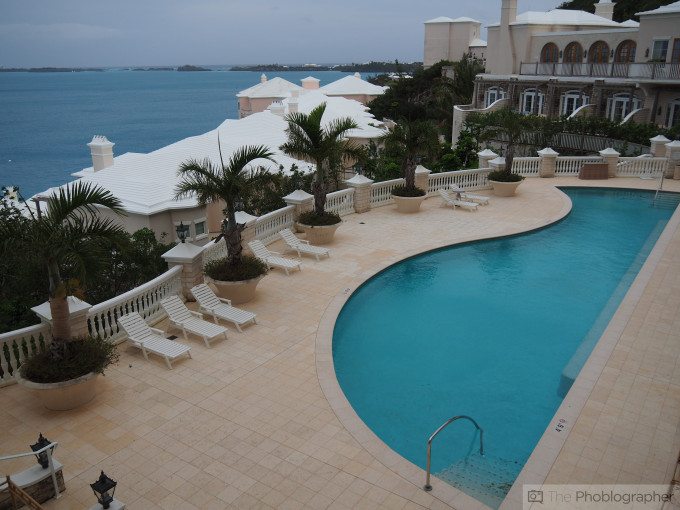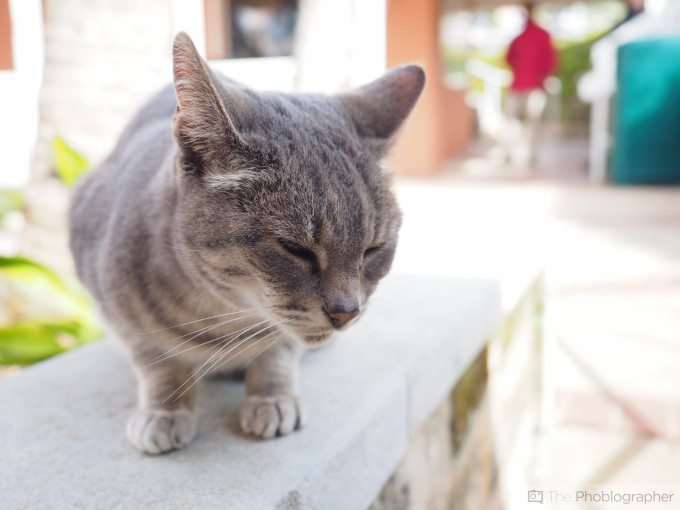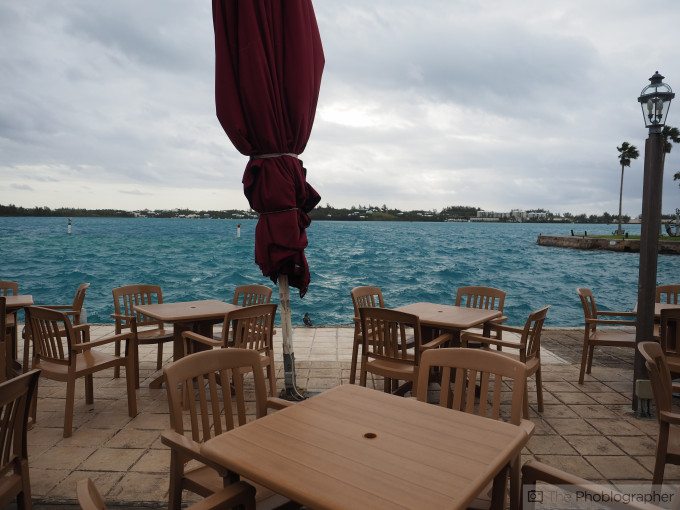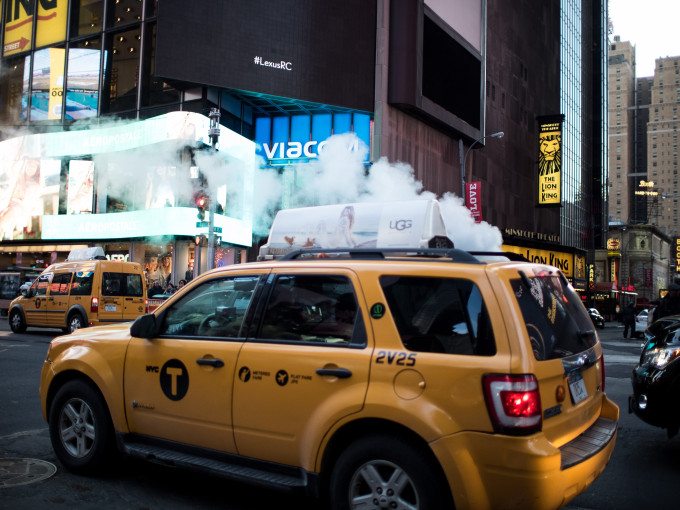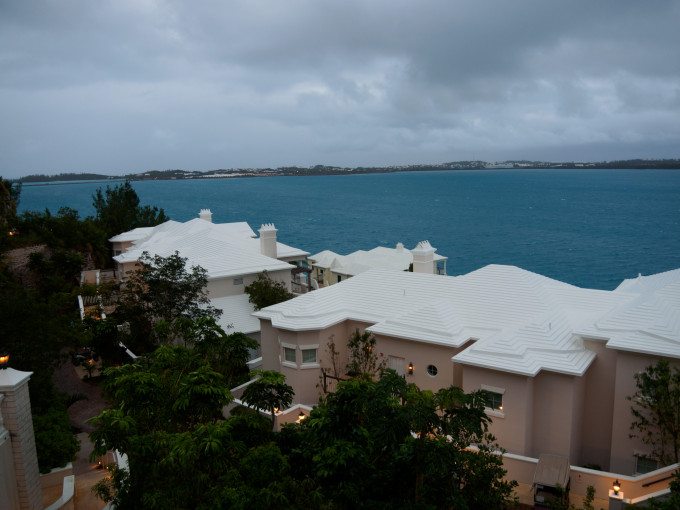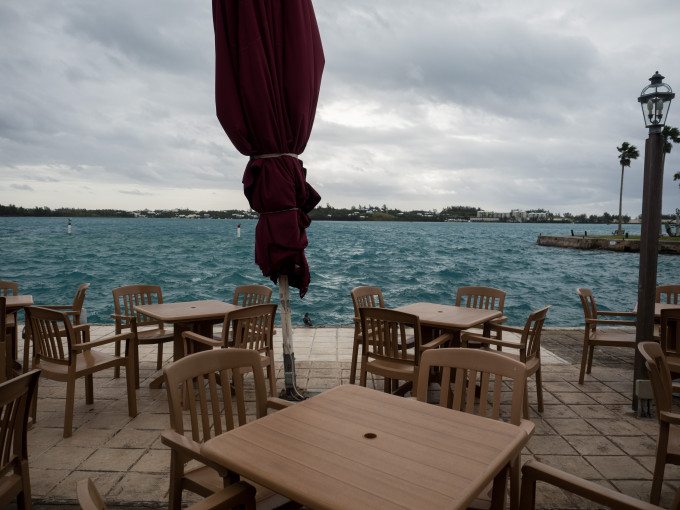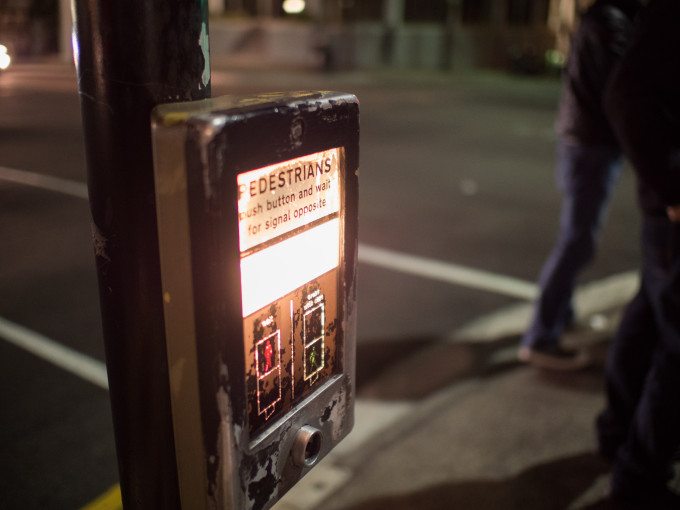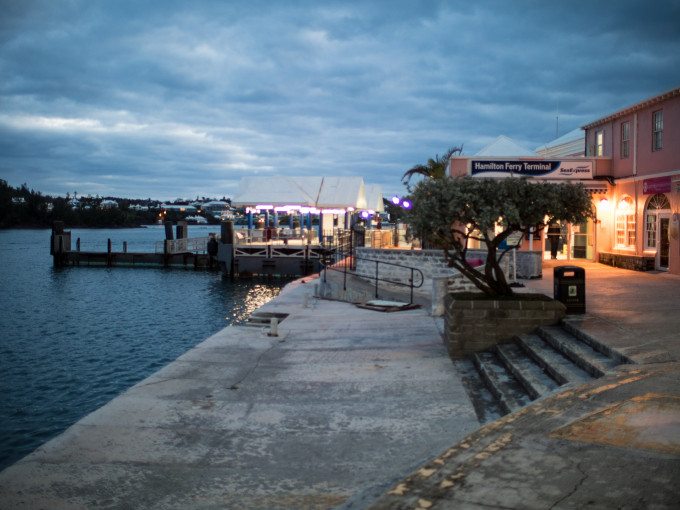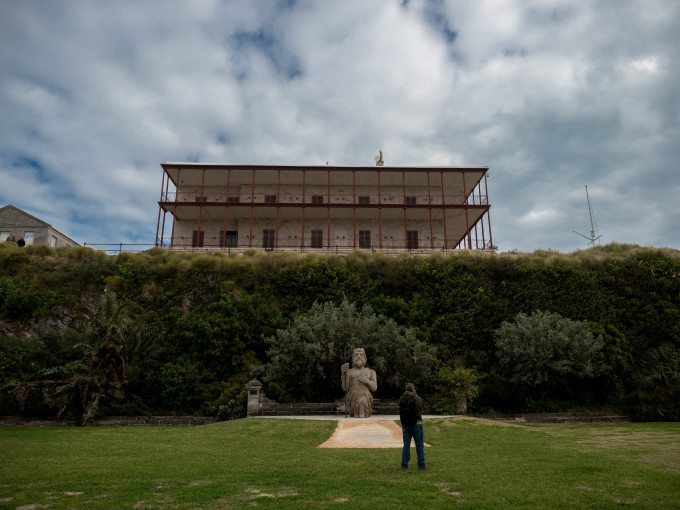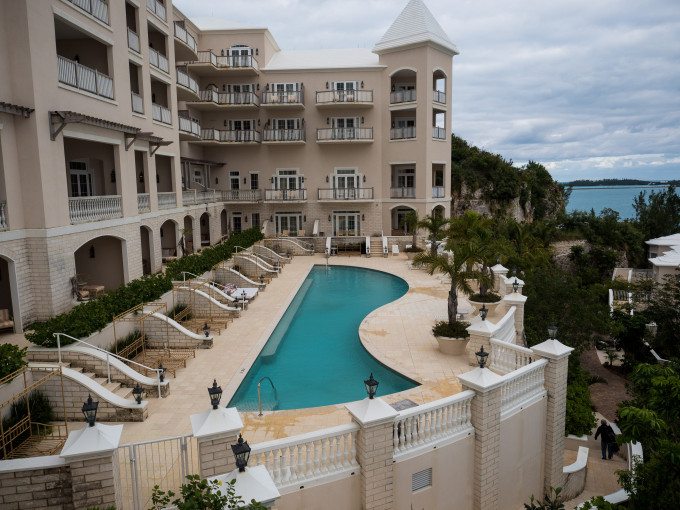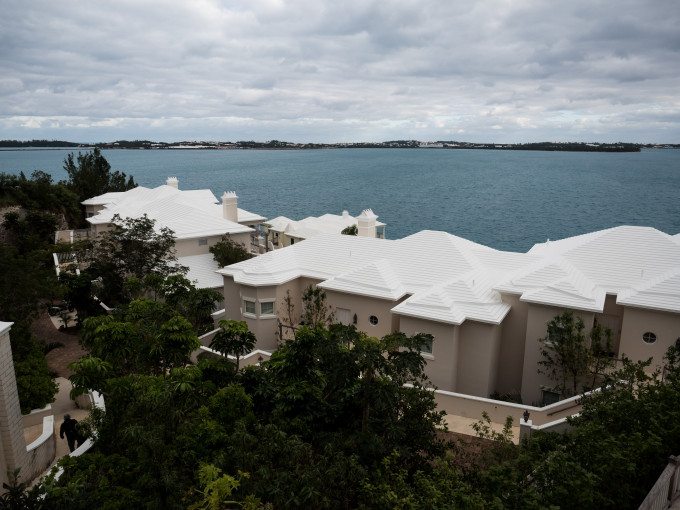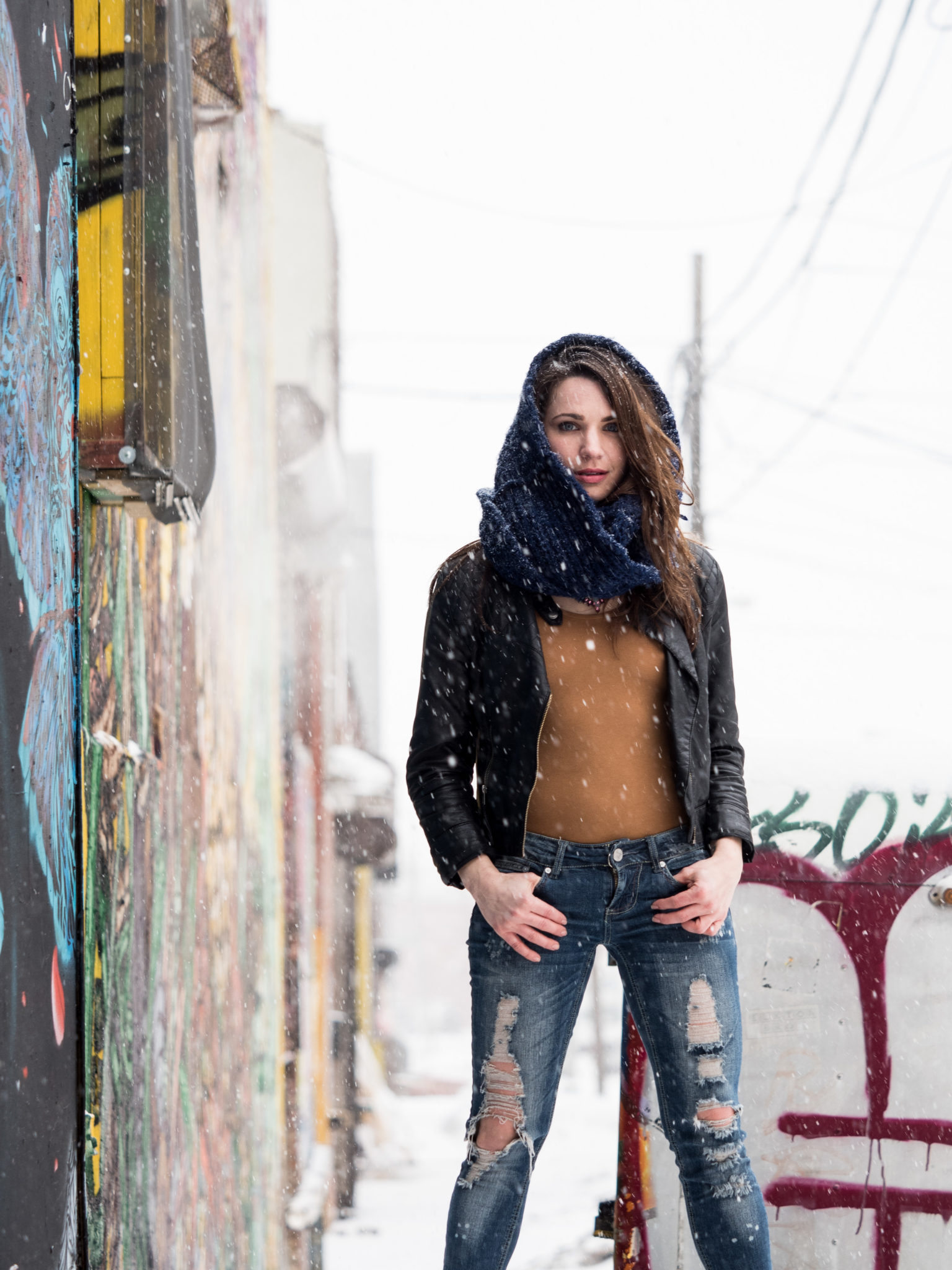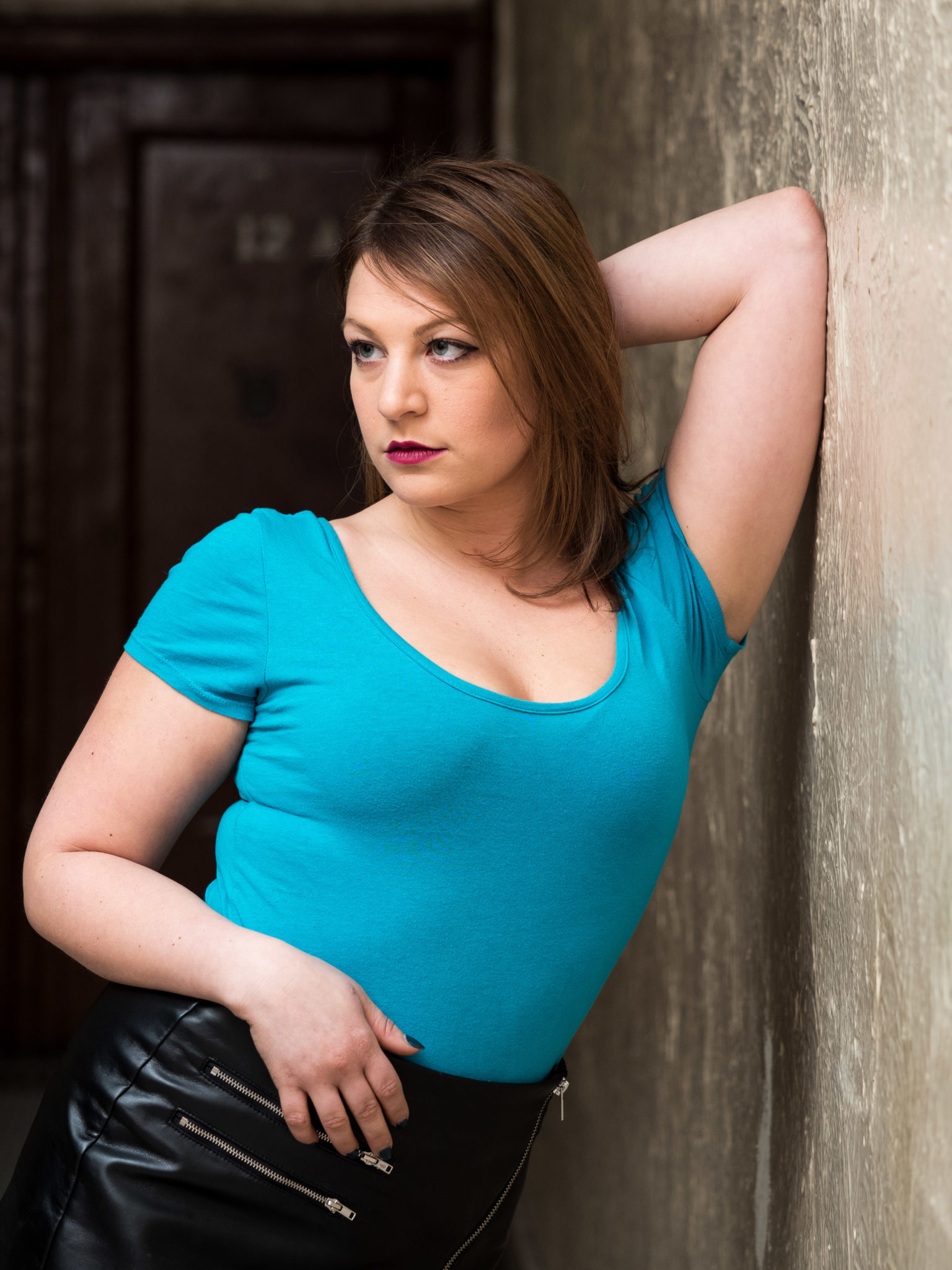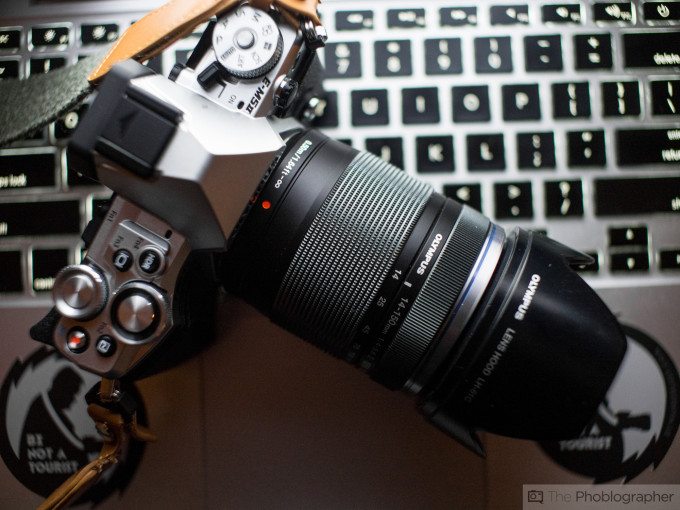Last Updated on 04/22/2015 by Chris Gampat
The Olympus OMD EM5 Mk II is the successor to what I believe in many ways was the closest thing to the perfect digital mirrorless camera ever made. When the Olympus OMD EM5 was announced, it was pitched as a weather sealed camera with fast autofocusing, a new sensor, great retro DSLR ergonomics, and a viewfinder that kicked some serious butt. Indeed, after Olympus was messing around a bit too much with their older Pen line, that was the camera that finally got it right.
It’s been years since that camera was announced and released; and we’ve now got its successor. With it comes the addition of WiFi integration, time lapse shooting, a 40MP high res shot mode, better weather sealing, improved (but more complicated ergonomics) faster shooting performance, the ability to make your AF points truly tiny, a different type of LCD screen, and a couple of other ergonomic changes. More than anything though, it moves away from the extra simplicity that the EM5 Mk I offered via controls. The Mk II has more buttons and in many ways looks like a more serious camera that is trying to have a retro look.
Overall, the Mk II is an excellent camera; but for an OMD EM5 user like me, I don’t believe that it’s at home is in my hands.
Update: April 22nd 2015, we’ve updated our review to include RAW image coverage
Pros and Cons
Pros
– Excellent build quality. In some ways it feels like a mini Nikon Df
– We’re not kidding, excellent ergonomics
– Very fast autofocusing performance
– Even quieter shutter than the original
– Nice JPEG images
– WiFi integration
– Weather sealing
– Focus peaking works phenomenally
Cons
– Despite lots of cool new features, we don’t think that it’s totally worth the upgrade
– Some issues regarding flash usage and high res shot mode
Gear Used
For this review, we used the Olympus OMD EM5 Mk II with the Voigtlander 17.5mm f0.95 lens, Olympus 12-40mm f2.8, Olympus 40-150mm f2.8, PocketWizard Plus X transceivers, and the Adorama Flashpoint Streaklight 180 WS
Tech Specs
Taken from the Olympus press materials distributed from us.
| Model name | E-M5 MarkⅡ | |
| Version/Date | 2014/12/16 ver1.02 | |
| Product Type | ||
| Product type | Micro Four Thirds interchangeable lens system camera | |
| Memory | SD Memory Card (SDHC, SDXC, UHS-I, II compatible, Eye-Fi Card compatible* ) *Not compatible with Endless Memory. |
|
| Sensor size | 17.3 mm (H) x 13.0 mm (V) | |
| Lens mount | Micro Four Thirds Mount | |
| Image Sensor | ||
| Product type | 4/3 Live MOS Sensor | |
| Number of pixels / aspect ratio | Number of effective pixels : Approx. 16.1 million pixels Total number of pixels : Approx. 17.2 million pixels Aspect ratio : 1.33 (4:3) |
|
| Dust reduction | Supersonic Wave Filter (image sensor dust reduction system) | |
| Recording(Still) | ||
| Recording format | DCF, DPOF compatible / Exif, PRINT Image Matching III, MPO compatible | |
| File format | RAW (12-bit lossless compression), JPEG, RAW+JPEG, MPO(3D still) | |
| Recording image size | [RAW] 4608 x 3456 pixels [JPEG] 4608 x 3456 pixels – 640 x 480 pixels |
|
| File size | RAW: 4608(H)x3456(V) (approx. 1/1.5 lossless compressed) Approx. 17MB Set1(LF): 4608(H)x3456(V) (1/4 compressed) Approx. 7.5MB Set2(LN): 4608(H)x3456(V) (1/8 compressed) Approx. 3.5MB Set3(MN): 3200(H)x2400(V) (1/8 compressed) Approx. 1.7MB Set4(SN): 1280(H)x960(V) (1/8 compressed) Approx. 0.4MB |
|
| Image Stabilization System | ||
| Type | Built-in 5-axis* sensor-shift image stabilization for movie and still photos *yaw/pitch/roll/vertical shift/horizontal shift |
|
| Mode | 4 modes (S-I.S.AUTO, S-I.S.1, S-I.S.2, S-I.S.3), OFF | |
| Live View image stabilization | Activation by half-pressing shutter button or enlarging view | |
| Focal length setting | With | |
| Stabilization performance | 5.0 EV* *Based on CIPA measurement conditions. When using M.Zuiko Digital ED 12-50mm F3.5-6.3 EZ (focal length =50mm (35mm equivalent with 100mm)) |
|
| Lens IS priority | With | |
| Finder | ||
| Finder type | Eye-level electronic viewfinder, approx. 2.36M-dot | |
| Field of view / Viewfinder magnification | Approx. 100% / Approx. 1.30x*1 – 1.48x*2 (-1m-1, 50mm lens, Infinity) *1: at Finder Style 1, 2 (aspect 4:3) *2: at Finder Style 3 (aspect 4:3) |
|
| Eye point / Diopter adjustment range | Approx. 21mm (-1m-1, Distance from rear lens surface) / -4 ~ +2m-1 | |
| Preview | Live View preview with depth of field preview lock | |
| Display Grid | Off / normal grid / golden grid / scale / diagonal / movie grid | |
| Level Gauge | 2-axis (horizontal/vertical) level gauge | |
| Finder Style | 3 styles | |
| Brightness / Colour temperature control | Automatic control of adaptive brightness technology / manual control (7 levels) | |
| Expansion of Live View Dynamic Range | When in HDR1 and HDR2 | |
| Eyecup | Interchangeable with separately available EP-16 eyecup | |
| Live View | ||
| Live View | Approx. 100% field of view, exposure compensation preview, WB adjustment preview, gradation preview, face detection preview (up to 8 faces), grid line, magnification display (x3/x5/x7/x10/x14),Display modes: Standard, Histogram, Highlight & Shadow, Level Gauge, Off (Image Only) |
|
| Preview | Preview with depth of field preview lock | |
| Monitor | ||
| Monitor type | 3.0-inch vari-angle monitor* *Approx.1037k dots (3:2), electrostatic capacitance touch panel |
|
| Touch control | Shutter release, magnification, AF area selection, AF area size adjustment, frame forward/backward, magnified playback, Live Guide, Super Control Panel, Art Filter selection, scene mode selection, Wi-Fi connection, selfie shutter release | |
| Tilting capability | With (mirror display when monitor is in self portrait position) | |
| Brightness / Color temperature control | ±7 levels / ±7 levels | |
| Color tone select | Vivid / Natural | |
| Focusing | ||
| AF system | High-speed imager AF | |
| Focus mode | Single AF (S-AF) / Continuous AF (C-AF) / Manual Focus (MF) / S-AF + MF / AF tracking (C-AF + TR) | |
| Full-time AF | With | |
| Magnified frame AF | Selectable from over 800 AF points Selectable magnification: x3, x5, x7, x10(Default), x14 Super Spot AF* *Available only when a Micro Four Thirds lens is attached |
|
| Face detection AF / Eye detection AF | With Eye Detection AF mode : off / nearer-eye priority / right-eye priority / left-eye priority |
|
| Focusing point / Focusing point selection mode | 81-area multiple AF | |
| / All target, group target area (9-area), single target(normal), single target(small) | ||
| AF illuminator | With | |
| Manual focus assist | Focus ring rotation activates Live View image magnification and/or focus peaking when in S-AF+MF or MF mode | |
| Peaking function | Activate with Fn button or focus ring Change peaking settings using the Info button Color selection: white, black, red, yellow Intensity selection: high, normal, low Back light effect: on, off |
|
| Exposure Control(Still) | ||
| Metering system (TTL Image sensor metering) |
Digital ESP metering (324-area multi pattern metering), center-weighted average metering, spot metering, spot metering with highlight control, spot metering with shadow control | |
| Metering range | EV -2 – 20 (using 17mm f2.8, ISO 100) | |
| Exposure mode | i Auto, P: Program AE (Program shift can be performed), A: Aperture priority AE, S: Shutter priority AE, M: Manual, Bulb, Time, Scene select AE, Art Filter, Underwater wide / macro* , My Set *Selectable from menu as a function on Fn button *My set can be set to mode dial function |
|
| Scene select AE | Portrait, e-Portrait, Landscape, Landscape + Portrait, Sport, Hand-held Starlight*1, Night scene, Night + Portrait, Children, High Key, Low Key, DIS mode, Macro, Nature Macro, Candle, Sunset, Documents, Panorama, Fireworks, Beach & Snow, Fisheye Conv., Wide Conv., Macro Conv.,Panning, 3D*2, *1 8 images automatically shot and combined into a single image composite *2 For 3D lens(H-FT012 by Panasonic) only, still photo only |
|
| ISO sensitivity | AUTO ISO : LOW(approx. 100) ‐25600 (customizable, Defalut:LOW-1600) Manual ISO : LOW(approx.100), 200 – 25600, 1/3 or 1 EV steps selectable |
|
| Exposure compensation | Still photo ±5 EV, movie ±3 EV, with selectable EV adjustment steps (1/3, 1/2, 1) *HDR shooting, monitor and EVF displays only up to ±3 EV. |
|
| AE lock | Locks with a half-press of the shutter button (can be set to Fn button as well) | |
| Shutter | ||
| Shutter type | Focal-plane shutter / 1/8000 – 60 sec., with selectable EV adjustment steps (1/3, 1/2, 1) Bulb/Time: selectable exposure time (1/2/4/8/15/20/25/30 min.), with 8-min. default setting |
|
| Flash | ||
| Flash intensity control method | TTL Auto, Auto*, Manual, Super FP*(FP-TTL AUTO, FP-MANUAL) * Available on the external flash |
|
| Built-in flash | – | |
| Bundled standard flash | FL-LM3(dustproof and splashproof flash) GN=9.1(ISO100・m)/ GN=12.9(ISO200・m) Bounce Capability (up and down:45, 60, 75, 90 degree / left and right 30, 60, 90, 120, 150, 180 degree) *Powered by the camera |
|
| Flash mode | Flash Auto, Redeye, Fill-in, Flash Off, Red-eye Slow sync.(1st curtain), Slow sync.(1st curtain), Slow sync.(2nd curtain), Manual(1/1(FULL)~1/64) | |
| Synchronization speed | 1/250 sec. Super FP: 1/125-1/8000 sec. / RC mode: 1/160 sec. |
|
| Flash intensity control | Up to ±3 EV in 0.3, 0.5, 1 EV steps selectable | |
| Compatible external flash | FL-50R, FL-36R, FL-20, FL-14, FL-300R, FL-600R | |
| Wireless Flash Control | ||
| Compatible external flash | FL-50R, FL-36R, FL-300R, FL600R | |
| Control method | Triggered and controlled by the bundled FL-LM3 or FL-600R (Olympus Wireless RC Flash system compatible) |
|
| External Flash intensity type | TTL Auto, Auto, Manual, FP-TTL-AUTO, FP-MANUAL | |
| Channel | 4 channels | |
| Group No. | 4 groups (External flash 3 groups + commander flash*) *FL-LM3 / FL-600R |
|
| Drive | ||
| Sequential shooting maximum speed | [Sequential shooting H mode] approx 10.0 fps *IS OFF *Focus and exposure are fixed at the values for the first shot. [Sequential shooting L mode] approx 5.0 fps *When using the M.ZUIKO DIGITAL ED 12-50mm f3.5-6.3 EZ |
|
| Max. recordable pictures on sequential shooting * |
[RAW] Max. ∞ frames (in 5.0 seq. shooting L) Max. 16 frames (in 10.0 seq. shooting H) [JPEG] Max. ∞ frames (in 5.0 seq. shooting L) Max. 19 frames (in 10.0 seq. shooting H) * When using the M.Zuiko Digital ED 12-40mm f2.8 Pro * With TOSHIBA SDHC UHS-II R95・W90 EXCERIA™ |
|
| Self-timer | Operation time: 12 sec., 2 sec., custom (Wait time: 1-30sec., Shot interval: 0.5/1/2/3sec., Number of shots: 1-10, Every time AF: ON/OFF) | |
| Bracketing | ||
| Exposure bracketing | 2, 3 or 5 frames in 0.3/0.7/1.0EV steps selectable, 7 frames in 0.3/0.7EV steps selectable *AE-BKT can be programmed to the Fn-button. |
|
| ISO bracketing | 3 frames in 0.3/0.7/1.0EV steps selectable | |
| White balance bracketing | 3 frames in 2, 4, 6 steps selectable in each A-B/G-M axis. | |
| Flash bracketing | 3 frames in 0.3/0.7/1.0EV step selectable | |
| Art Filter bracketing | i-Enhance, Vivid, Natural, Muted, Portrait, Monotone, Custom, Art Filters selectable | |
| HDR function | ||
| HDR(Auto composite) | HDR1, HDR2 (painting-like) ※ISO sensitivity is fixed at 200, and maximum shutter speed setting is 4 sec. ※Exposure compensation can be performed. |
|
| Bracketing for HDR post process | 3 or 5 frames in 2.0/3.0EV steps selectable, 7 frames in 2.0EV steps selectable. *This function does not execute HDR processing. *HDR function can be assigned to the Fn-button. |
|
| Art Filter | ||
| Mode (Variation / Effect) | Pop Art (I, II / a.b.c.d.e.f.) | |
| Soft Focus ( – / c.e.) | ||
| Pale & Light Color (I, II / a.b.c.d.f.) | ||
| Light Tone ( – / d.f.) | ||
| Grainy Film (I, II / b.c.d.g.h) | ||
| Pin Hole (I, II, III / d.) | ||
| Diorama ( I,II / d.) | ||
| Cross Process (I, II / b.c.d.f.) | ||
| Gentle Sepia ( – / a.b.c.d.f.) | ||
| Dramatic Tone (I / b.c.d.e.f.) (II / b.c.d.e.f.g.h) | ||
| Key Line (I, II / a.b.c.d.e.) | ||
| Watercolor (I, II / a.b.c.d.) | ||
| Vintage (I, II, III / a.b.c.d.e.f.i) | ||
| Partial Color (I, II, III / a.b.c.d.e.f) | ||
| Art Effect | a. Soft Focus Effect | |
| b. Pin-Hole Effect | ||
| c. White Edge Effect | ||
| d. Frame Effect | ||
| e. Star Light Effect | ||
| f. Blur Effect (Top & bottom, Left & Right) | ||
| g. B&W Effect (None, Yellow, Orange, Red, Green) | ||
| h. Pict. Tone (None, Sepia, Blue, Purple, Green) | ||
| i. Shade Effect (Top & bottom, Left & Right) | ||
| Color Ring (for partial color) | 18 color selectable | |
| PHOTO STORY | ||
| Type (Variation / Flame / Number of | Standard (Ⅰ,Ⅱ,Ⅲ,Ⅳ / a,b,c,d / A,B,C,D ) | |
| divided parts) | Fun Frame (Ⅰ,Ⅱ,Ⅲ /-/-) | |
| Speed ( - / – / A,E,F) | ||
| Zoom in / out (Ⅰ,Ⅱ/ a, c / A, G) | ||
| Layout (Ⅰ,Ⅱ,Ⅲ,Ⅳ/ -/ -) | ||
| Frame Effect | a. White Frame | |
| b. White Frame & White Edge Effect | ||
| c. Black Frame | ||
| d. White Frame & Pin Hole Effect | ||
| Aspect &Window Pattern | A. 4:3, 2 frames | |
| B. 4:3, 3 frames | ||
| C. 1:1. 2 frames | ||
| D. 1:1, 3 frames | ||
| E. 1:1, 4 frames | ||
| F. 16:9. 5 frames | ||
| G. 16:9, 2 frames | ||
| Hold function | With | |
| Movie | ||
| Recording format | MOV(MPEG-4AVC/H.264) , AVI(Motion JPEG) | |
| Mode / frame rate / compression method | 〔MOV〕 | |
| 1920×1080(FHD) / 30p, 25p, 24p / ALL-I (A-I), IPB(SF,F,N) | ||
| 1920×1080(FHD) / 60p, 50p / IPB(SF, F, N) | ||
| 1280×720(HD) / 60p, 50p, 30p, 25p, 24p / ALL-I (A-I), IPB(SF,F,N) | ||
| *60p:59.94fps、50p:50.00fps、30p:29.97fps、25p:25.00fps、24p:23.98fps | ||
| *FHD ALL-I (A-I: approx. 77Mbps) | ||
| *FHD IPB(SF:approx. 52Mbps、F:approx. 30Mbps、N:approx. 18Mbps) | ||
| 〔AVI〕 | ||
| 1280×720(HD) / 30p | ||
| 640×480(SD) / 30p | ||
| *Frame rates may drop when particular Art Filters and Movie Effect are used *Class 10 or higher SD card is recommended for shooting movies *UHS-II or UHS-I U3 card is recommended for ALL-I shooting. |
||
| Maximum recording time | [MOV] | |
| Approx. 29min | ||
| [AVI] | ||
| HD : Approx. 7min* / SD : Approx. 14min* | ||
| *Excluding when particular Art Filters are used | ||
| Battery Life | Approx. 80 minutes* (under standard JEITA testing) Approx. 150 minutes* (when zoom and other operational functions are not used) *When repeatedly recording at the maximum time of 29 minutes |
|
| Art Filter Movie | With* *Frame rate: 30fps or lower. |
|
| Movie Effect | One-shot Echo / Multi-echo / Art Fade / Old Film | |
| One-push Movie Digital Converter | ×4 | |
| Time Lapse Movie | AVI Motion JPEG 1280×720 ,10fps | |
| Photo in Movie | With (mode1* / mode2) *mode1 is available when recording framerate is less than 30p. | |
| Clips | 1, 2, 4, 8 sec (Further continued shooting possible by pressing movie record button again) |
|
| Quick Movie / Slow Movie | With | |
| Image Stabilization for Movie | M-IS1(Image sensor shift and electronic image stabilizer with multi motion IS), M-IS2(Image sensor shift with multi motion IS), Off *Field of view may be affected. |
|
| Grid Line / Focus Peaking | 4 types of grid lines / 4 colors for focus peaking | |
| Time code | Rec run/free run, drop frame/non-drop frame | |
| Live View Output via HDMI | With (GUI* is shown on connected device only, and peaking function is not available when connected by HDMI.) *GUI can be hidden on the connected device by pressing down on INFO button for recording an external drive under the following condition. Movie quality: YCbCr 4:2:2 / Frame rate: same as movie setting (24p, 30p and 60p settings are not recommended.) / Sound recording: not available |
|
| Exposure Control | Program AE, aperture priority AE, shutter priority AE, manual | |
| AE Lock | With | |
| Recording(Sound) | ||
| Recording format | Wave Format (Stereo linear PCM/16-bit, Sampling frequency 48kHz) | |
| Microphone / Speaker | Stereo/Mono | |
| Microphone function | Wind noise reduction, Recording volume, Microphone volume limiter Audio dubbing possible for still pictures (up to 30 sec.) |
|
| White Balance | ||
| White balance mode | Auto WB, 7 Preset WBs, 4 Capture WBs, Custom WB(Kelvin setting) | |
| White balance compensation | ±7 steps in each A-B/G-M axis * Except for Custom WB | |
| Color Mode | ||
| Color matrix | sRGB, Adobe RGB | |
| Picture Mode | ||
| Mode | i-Enhance, Vivid, Natural, Muted, Portrait, Monotone, Custom, e Portrait, Color creator, Art Filters | |
| Gradation | Auto, Normal, High Key, Low Key [except Art Filters] | |
| Keystone Compensation | ||
| Keystone Compensation | Yes (can be confirmed on Live View) | |
| High Res Shot | ||
| Resolution | Equivalent to 40M pixel sensor (8 shots combined into a single JPEG using sensor shift) *Available in P/A/S/M mode, RAW+JPEG or JPEG. *JPEG: 7296 x 5472 / RAW: 9216 x 6912 *RAW data can be developed in-camera. Development by PC is possible with the appropriate plug-in. |
|
| Shutter Type / Shutter Speed | Electronic shutter / 1/8000 – 8 sec. | |
| Anti-shock Mode | ||
| Shutter Type / Shutter Speed | Electronic first curtain shutter / 1/320* – 60sec *For speeds over 1/320 sec., mechanical shutter will automatically be selected. |
|
| Shutter start delay | 0, 1/8, 1/4, 1/2, 1, 2, 4, 8, 15. 30sec | |
| Silent Mode | ||
| Shutter Type / Shutter Speed | Electronic shutter / 1/16000 – 60sec | |
| Shutter start delay | 0, 1/8, 1/4, 1/2, 1, 2, 4, 8, 15. 30sec | |
| Live Bulb /. Live Time | ||
| Update interval time | 0.5 sec – 60 sec | |
| Live Composite | ||
| Update interval time / composite method | 0.5 sec – 60 sec / Lighten Mode (Bright area prioritization) | |
| Interval Mode | ||
| Interval Mode | Interval Time 1sec. – 24 Hours, Max 999 frames. Available on making Time-lapse movie automatically |
|
| Multi Exposure | ||
| Number of picture / Function | 2 frames / Auto gain, Exposing on Recorded picture(RAW) | |
| Multi Aspect | ||
| Aspect Ratio | 4:3(Default) / 3:2 / 16:9 / 1:1 / 3:4 | |
| Level Gauge | ||
| Detection | 2-axis | |
| One push Tele-converter | ||
| Magnification | x2 | |
| Wi-Fi Function | ||
| GPS info. Function | Via smartphone GPS data | |
| Wireless Shooting | Live View, Rec View, Wireless Touch AF shutter, Self Timer (w/Countdown guidance, Sequential shooting, movie recording capability), Wireless Release, Movie Recording, Power Off iAuto / ART / P / A / S / M (Live Bulb, Live Time) and drive mode can be selected.* Aperture, shutter speed, exposure, ISO sensitivity, white balance can be adjusted.* *When in private connection |
|
| Image Share | File Type: JPEG*, MOV Connect to up to 4 devices simultaneously. Marking function for image share. *Excluding MPO file |
|
| Easy Connection | QR code setting | |
| Tethered shooting | ||
| Tethered shooting | Via USB connection, with use of Olympus Capture tethering software (camera can be controlled by both the camera and computer) | |
| Playback | ||
| Playback mode | Single-frame, Information display, Index display (4/9/25/100 frames), Calendar, Enlargement (2x – 14x), Movie (with sound, FF/REW/Pause), Picture rotation (auto), Slideshow (with sound including BGM, Slide show effects, replaceable BGM), Light Box display | |
| Information display | Histogram (independent luminance / RGB available), Highlight/Shadow point warning, AF frame, Photographic information, OFF | |
| Menu | ||
| Languages | 34 languages selectable : – English, French, German, Spanish, Italian, Japanese, Korean, Traditional Chinese, Simplified Chinese, Russian, Czech, Dutch, Danish, Polish, Portuguese, Swedish, Norwegian, Finnish, Croatian, Slovenian, Hungarian, Greek, Slovakian, Turkish, Latvian, Estonian, Lithuanian, Ukrainian, Serbian, Bulgarian, Rumanian, Indonesian, Malay, Thai |
|
| Reset & custom setting | ||
| My set | 4 settings recordable / Available to set to mode dial | |
| Image Editing | ||
| Editing function | RAW data edit, Gradation auto, Monochrome, Sepia, Red-eye fix, Saturation, Resize (1280×960, 640×480, 320×240), Trimming, Aspect, e-Portrait, Image Overlay, Post recording | |
| RAW data edit | RAW data edit based on settings of the camera (including e-Portrait, Color Creator, Art Filter, ART-BKT). 2 programmable settings, preview capability. |
|
| Print function | Print reservation (DPOF), Direct print (PictBridge compatible) | |
| Input/Output | ||
| USB/AV/Remote controller connector | Dedicated multi-connector [USB: USB2.0 Hi-Speed, Video: NTSC/PAL selectable, Optional Remote cable RM-UC1 compatible.] | |
| HDMI connector | Micro HDMI (Type-D) | |
| Flash attachment | Hot shoe / Sync. terminal | |
| Accessory Port 2 | – | |
| Microphone input jack | φ3.5 stereo mini jack | |
| Headphone connector | None / Attachment of HLD-8G optional grip allows connection | |
| PC interface | USB2.0 Hi-Speed | |
| TV interface | HDMI out(HD / stereo), video out(SD / mono) | |
| DC connector | None / attachment of HLD-8 power battery holder allows connection | |
| Power Requirements | ||
| Battery | BLN-1 Li-ion battery (included) | |
| Power Battery Holder | HLD-8 Power Battery Holder separately available. Allows attachment of an additional BLN-1. |
|
| AC Adapter | AC-3 AC adapter* separately available. *HLD-8 Power Battery Holder is required for connection. |
|
| Sleep mode | Available (1/3/5 min. off) | |
| Number of recordable pictures | Approx. 310 shots (using BLN-1 and TOSHIBA SD with IS ON, based on CIPA test standards) Approx. 750 shots (using BLN-1 and TOSHIBA SD with IS ON and Quick Sleep Mode ON, based on Olympus testing using CIPA test standards) |
|
| Dimensions / Weight | ||
| Dimensions | 123.7mm(W)×85mm(H)×44.5mm(D) [CIPA guideline compliant, excluding protrusions] |
|
| Weight | Approx. 469g [CIPA guideline compliant, with BLS-50 battery and Memory card] Approx. 417g [body only] |
|
| Operating Environment | ||
| Temperature | -10 ~ +40℃ (when in operation) / -20 ~ +60℃ (when stored) | |
| Humidity | 30 – 90% (when in operation) / 10 – 90% (when stored) | |
| Box contents | ||
| Box contents | Body, FL-LM3 flash, BLN-1 Li-ion battery , BCN-1 Li-ion battery charger , USB cable, shoulder strap, Olympus Viewer 3 (CD-ROM), instruction manual, warranty card |
Ergonomics
Taken from our First Impressions post
The Olympus OMD EM5 MK II in many ways is different from the OMD EM5 original when it comes to the ergonomics. We start our tour with the front of the camera where we immediately see a different set of exposure dials, a PC sync port, and a slightly enhanced grip.
From this view, they didn’t touch it much–and we’re okay with that.
Move to the top, and you start to see lots of differences. There are now a plethora of function buttons, the dials have been enhanced, and there is a lot more going on.
The back of the OMD EM5 Mk II is enhanced with different buttons, the switch from the EM1 and a vari-angle flip out screen.
This screen works in a totally different way from the original EM5. To be honest, I prefer the original. However, this screen makes it easier for video shooters.
Olympus is also introducing a new grip for the camera if users want to work with said grip. We personally find it superfluous.
VS the EM5
Looking top down, the EM5 Mk II (left) has received lots of enhancements over the first version. Where the first version emphasized simplicity Olympus now adds steroids, beef, and bacon. Lots of bacon.
But when looking at the cameras from the front, you don’t see all that much of a difference.
Build Quality
During our review, we stuck the camera in the snow and used it in the rain. The Olympus OMD EM-5 Mk II shrugged it all off with no issues–which is a testament to its weather resistance. The EM5 Mk II even has a bit of extra weather sealing under the hot shoe, though Olympus recommends using a hot shoe cover to fully complete the sealing.
Ease of Use
The Olympus OMD EM5 Mk II will work well in the hands of someone who wants to set it to auto and just shoot to their heart’s content. But why would you want to do that?
The camera has so many functions and hidden features that you’ll want to spend a lot of time with it before taking it out for serious shooting. For example, you need to turn off the quick sleep mode in order to make sure that the camera doesn’t drive you insane during use.
Veteran Olympus users will have no problems with the menus. But newbies will have to take their time and be very careful.
Autofocus
Best. Damn. Autofocus. Ever.
No, I’m seriously, not kidding about this. The thing about being a reviewer is that you’re often testing lots of cameras at once.
Sony? This blows anything they have away.
Nikon? Sit down.
Canon? Yeah, you’re beat.
Samsung? You’re not catching up to this.
Fujifilm? No way.
The EM5 Mk II feels like the fastest autofocusing camera I’ve ever tested. Sometimes it won’t nail the focus but those are often in situations where almost no camera will ever nail them. In extremely low light situations we almost never had focusing issues either. Occasionally, we saw issues with falling snow, but that was quickly fixed by pressing the focusing button again.
Metering
In our tests, we found the Olympus OMD EM5 Mk II to underexpose the scenes by around 1 stop according to Sunny 16 metering methods. This isn’t too terrible and in many ways is standard for digital cameras.
Keep this in mind as you go out to shoot street photos.
Image Quality
At the moment of publishing this review, we’ve only had a chance to review the JPEG images. Yes, we can review it with Olympus’s own software; but that goes against our personal standards of testing. Most of you use Adobe Lightroom and wouldn’t touch other software. So we will wait until support comes for our overlord Adobe.
So how is it? It’s better than the OMD EM5 Mk I in terms of the ways that colors are rendered and a little bit better in the higher ISO range–but we don’t think that it’s enough to want to sacrifice virgins to the Olympus execs. Again though, we’re talking about the JPEGs here and Olympus has used very versatile Sony sensors for a while.
We will update this section more in depth when we can use the RAW files in Lightroom.
Edit: we’ve got RAW files tested now.
Since the release of Adobe Lightroom CC, we’ve been able to test the Olympus OMD EM5 Mk II RAW files. Our verdict? The sensor in this camera is the only one you may ever need. With proper metering techniques (and even improper ones) you’ll be able to push and pull the files into oblivion and still get great, usable results.
High ISO Results

As far as the high ISO JPEG results go, they’re very nice looking. Not a whole lot of noise and any that is there can be easily nerfed. We found the JPEGs to also be very detailed.
Update
When it comes to the High ISO results, we didn’t have much of a problem with the image noise to start. Anything that you see and don’t like is easily nerfed even at ISO 6400. Beyond this it starts to get a bit messy. However, what we’re really happy about is how versatile the color space is even at ISO 6400–which is considered an extension by the camera. The image above was pretty much all red, but we were able to fix the file to get something much more color neutral and true to life.
RAW File Versatility
We can’t test this yet with Adobe Lightroom.
Update:
Holy crap.
This is an original image.
This is the edited photo. By pushing the shadows, pulling the highlights, and working with the curves in conjunction to the specific color channels, we were able to get the photo above. To be fair, we felt that the greens were a bit lacking here though in other photos it isn’t at all. The photo above isn’t too far off from real life, though it could have used even more luminance and saturation.
By far, this has to be the most versatile sensor that we’ve seen.
High Res Shot
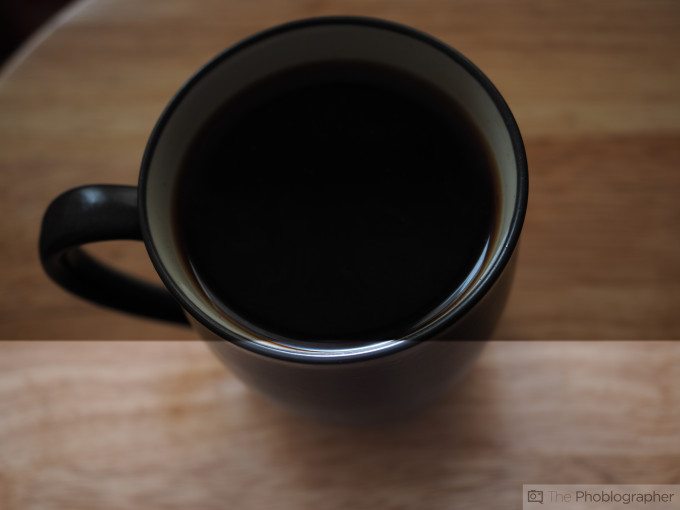
Here’s where this review became a bit weird. We opted to test the high res shot mode with a flash and a PocketWizard. But no matter what we did, the flash would only perfectly sync up with the image if we shot below 1/30th of a second.
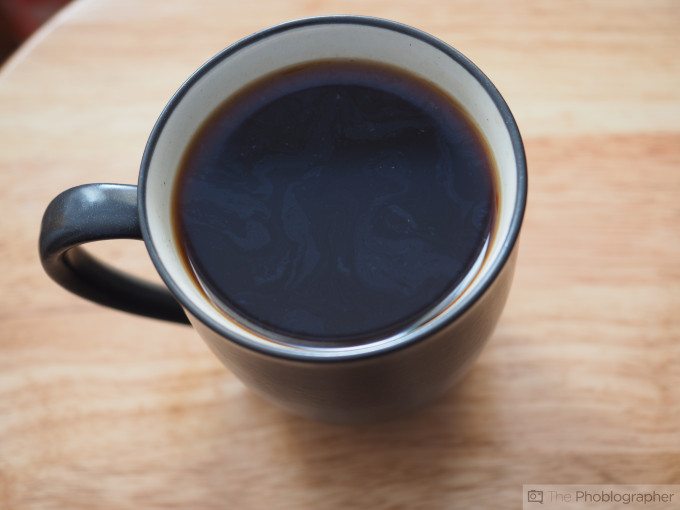
This is only a real concern if you’re using a flash but otherwise we didn’t have any major issues with it. Granted, we again only saw the JPEG images.
Update:
While the 40MP high res shot feature is cool, we’re not totally completely impressed. It’s a nice feature if you want it for the resolution but to be fair pretty much no one needs resolution like that except the most demanding of professional photographers and retouchers. The RAW file versatility is still the same since the sensor is the same.
Extra Image Samples
ALL OF THESE IMAGES ARE JPEGS STRAIGHT FROM THE CAMERA AND RESIZED FOR THE WEB. EXIF DATA CAN BE SEEN BY CLICKING THE IMAGE AND READING THE INFORMATION IN THE URL.
RAW File Edits
Conclusions
Likes
– Ergonomics, though a bit too complicated vs the original
– Weather sealing
– Crazy fast autofocus
– Really like the JPEG output
– Nice feel in the hand
Dislikes
– The amount of time you need to spend with the camera beforehand to ensure that it’s properly set up.
The Olympus OMD EM5 Mk II is a wonderful camera. It deserves all the praises and wonderful awards that you can possibly give it. Wifi, great image quality, a high resolution image mode to add to the future proofing, crazy fast AF, great lenses, a nice feel, weather sealing, focus peaking that works well, what more could a photographer seriously ask for?
In many ways the OMD EM5 Mk II is the successor to an already nearly perfect camera, but still doesn’t get it quite right. It adds much more complications to the Mk I’s elegance and during the duration of our review, we couldn’t totally get our muscle memory wrapped around the camera.
Does that mean that you won’t? No way; but it will take a longer amount of time ergonomically speaking.
Is it a nice camera? It’s a great camera, but there are many other great options out there. It’s at a nice price point and pretty much outperforms anything else in this specific market category due to the lens selection, but we’re not sure that the camera is strong enough to stand on its own without said lenses.
Only time will tell when we review the RAW samples.
We award the Olympus OMD EM5 Mk II five out of five stars; but not our Editor’s Choice award. Want one? Check out Amazon’s current pricing.
UPDATE
The sensor in the Olympus OMD EM5 MK II is the single best four thirds sensor that we’ve tested. It’s got a ton of dynamic range, great high ISO abilities, can give you a higher resolution photo if you need, lots of autofocus points that just work, and a heck of a lot going for it. On a personal note, I’m more partial to the simplicity that the Mk I delivers, but we totally see how photographers will relate to this product much more.
The Olympus OMD EM5 Mk II wins our Editor’s Choice award for the best Four Thirds sensor camera that we’ve tested.
Recommended Lenses and Accessories
Voigtlander’s f0.95 lenses: Do we need to say more about this? The equivalent depth of field of F2 on a full frame camera is the biggest reason to spring for these.
Olympus 12-40mm f2.8: It’s a great every day lens for this camera.
Olympus 40-150mm f2.8 Pro: Our favorite lens for thsi camera due to how it makes portrait subjects look.


